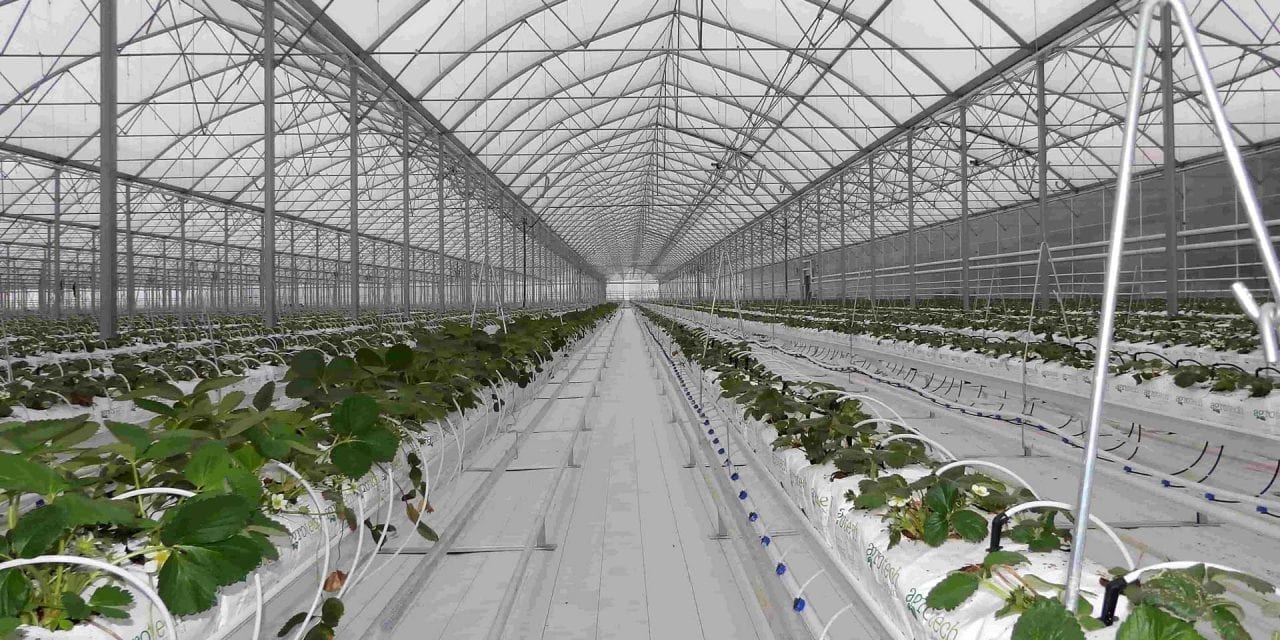The post Greenhouses and Microgrids Should Grow Together appeared first on POWER Magazine.

As consumer preferences continue to shift toward purchasing locally sourced and organic produce, demand is growing for commercial greenhouses, or controlled environment agriculture (CEA), as the industry is labeled. This shift in preference to locally grown food is changing the way supermarkets and restaurants source their fruits and vegetables.
COMMENTARY
Many restaurants throughout the country boast menus that are not only farm-to-table, but local-to-table. What many consumers may not realize is, for produce to be considered “locally grown organic,” it must have been grown within 400 miles of the point of sale. That may seem like a long distance for produce to travel, but without local CEA facilities, greens at any given supermarket may have traveled thousands of miles from places such as Central or South America.
Reinforcing the Supply Chain
The push for more locally sourced produce is not a fad but an enduring trend among increasingly discerning consumers. As a result, reinforcing the supply chain for produce is a growing concern. When the arrival of the COVID-19 pandemic quickly resulted in empty grocery store shelves in the spring of 2020, the need for increased food security became painfully obvious. A widely distributed food-supply infrastructure with short delivery distances would provide much stronger resilience.
Per square yard of land, CEA facilities can support up to 20 times the volume of produce compared to traditional farming, but greenhouses still require substantial real estate to deliver the volume of fruit and vegetables necessary to meet consumer demand. It shouldn’t be a surprise the plots of land suitable for CEA sites aren’t found in the urban areas they will ultimately serve. Rather, good locations for industrial agriculture are most frequently found in rural areas at the very edge of the electricity grid, where utility capacity is often constrained and outages may be frequent.
Reliable heat and power are critical for the success of any greenhouse, yet both can be difficult to deliver to CEA facilities because the sites often require industrial-scale power capacity of 3 MW or more. That is the equivalent of the electricity used by more than 2,000 homes. This demand stems from the use of electric grow lights as well as water pumps and other motors, all to foster the ideal growing environment regardless of geographic location or time of year.
Meeting Demand with Infrastructure
Pairing the CEA energy demands with the suboptimal electrical infrastructure typical for rural locations on the grid can lead to disasters for greenhouse owners if not adequately mitigated. A sustained power outage wouldn’t just knock out the lights, it could destroy an entire crop.
Utility-driven improvements at these locations are often possible but can be expensive and time-consuming. For many utilities, reliability improvements and capacity increases at specific CEA locations benefit only a small fraction of their customers, making it difficult to justify the cost when compared to service improvements in more populated areas.
When the grid was built decades ago, no one expected large energy demands at the rural edges of the grid. But insufficient grid capacity and reliability shouldn’t prevent commercial greenhouse facilities from becoming more commonplace throughout the country.
The Power of Microgrids
Thankfully, there is another way to support these facilities’ energy needs that augments and enhances existing utility electrical service: microgrids. Microgrids have the potential to service these remote locations without major investment by the utility, and they can offer a more reliable and resilient energy supply.
Microgrid systems can be designed to support industrial-scale loads of both heat and electricity, and they can be tailored to meet the individual needs of each commercial greenhouse. Because the energy needs at CEA sites involve both heat and electricity, the most common microgrid solution for these facilities includes combined heat and power (CHP) plants with natural gas-fueled engines. These systems can be optimized to provide the required heat output needed for ideal growing conditions and can be outfitted with scrubbers to extract carbon dioxide and feed it back into the greenhouses, enhancing photosynthesis and increasing crop yield.
Just as existing electrical infrastructure limitations shouldn’t prevent the proliferation of CEA, neither should cost. Financed microgrids make it possible for a greenhouse to reap the benefits of the microgrid without having to pay for the upfront costs of the system. The business case for commercial greenhouses lies in investing in high-density, high-quality agricultural production, not in energy systems.
Focus Capital on the Business
By outsourcing energy and related technical functions to partners more familiar with energy technology and economics, CEA operators can focus their capital on growing fruit and vegetables. When a greenhouse developer builds a business plan, it is often focused on long-term produce sales contracts. Predictable long-term revenue makes a long-term contract for reliable energy an easy decision.
The number of third-party owned microgrids is growing across the country, and the volume of interested investors continues to rise. Energy and agriculture are two businesses that will always be in high demand, which makes the investment in CEA microgrids an easy sell. Greenhouses benefit from reliable, efficient, and resilient energy, and the microgrid owner benefits from a constant long-term revenue stream. The most challenging part of this process from the CEA perspective is finding the right microgrid experts to help.
Not all microgrid integrators have the level of experience needed for demanding environments such as commercial greenhouses. Finding a partner skilled in turnkey designs, renewables integration, utility experience, and sophisticated microgrid controls is crucial for getting a microgrid done right on the first try.
As the country works to strengthen the food supply chain, agricultural production from commercial greenhouses will become increasingly important. CEA microgrids will help accelerate this work by ensuring reliable and resilient power anywhere crops can be grown.
—Erik Svanholm is vice president of Non-Wires Alternatives at S&C Electric Company and president of IPERC, its microgrid controls subsidiary.
The post Greenhouses and Microgrids Should Grow Together appeared first on POWER Magazine.
POWER Magazine